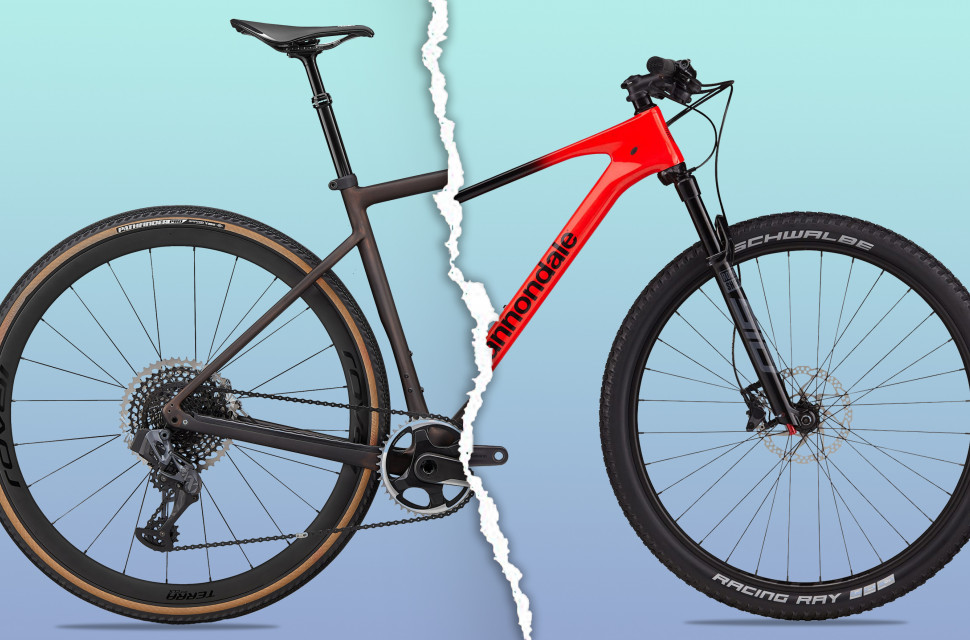


Introduction:
Mountain bikes and gravel bikes are two popular choices among cycling enthusiasts, each designed to excel in specific terrains and riding styles.
While both bikes share similarities, they also possess key differences that make them suitable for distinct riding experiences.
Read More : ” Do Mountain Bike Tires Have Tubes? “
Explanation:
Terrain and Purpose:
Mountain Bikes: Designed for off-road adventures, mountain bikes feature sturdy frames, wide tires with aggressive tread patterns, and suspension systems to absorb shocks on rough trails.
They excel in tackling steep inclines, rocky terrains, and challenging descents, providing superior control and stability.
Gravel Bikes: Geared towards versatility, gravel bikes blend road and mountain biking features. They have slimmer tires with smoother tread patterns to handle both paved and unpaved surfaces effectively.
Gravel bikes are ideal for mixed-terrain rides, long-distance touring, and exploring various landscapes.
Frame Geometry:
Mountain Bikes: Typically, mountain bikes have slacker geometry, which means a more relaxed and upright riding position. This allows better control and balance while navigating technical trails.
Gravel Bikes: Gravel bikes often have a more upright riding position compared to road bikes, but it’s not as slack as mountain bikes. This balanced geometry provides comfort and stability for both on- and off-road riding.
Suspension:
Mountain Bikes: The most significant difference is the presence of front suspension (hardtail) or both front and rear suspension (full-suspension) in mountain bikes. This enhances traction and minimizes the impact of rough terrains.
Gravel Bikes: Gravel bikes usually lack suspension to keep the bike lightweight and efficient on smoother surfaces. However, some models may offer limited suspension features for added comfort on rougher terrains.
Tire Clearance:
Mountain Bikes: Mountain bike frames typically allow clearance for wide and knobby tires, offering superior traction and stability.
Gravel Bikes: Gravel bikes can accommodate slightly wider tires than traditional road bikes, allowing riders to tackle varying terrains with confidence.
In conclusion, understanding the differences between mountain bikes and gravel bikes helps cyclists select the best option based on their preferred riding style, terrain, and adventure goals.
Whether it’s conquering rugged trails or embarking on long-distance explorations, each bike offers unique advantages tailored to specific biking experiences.
Read More : ” Is Mountain Biking A Good Workout? “
Terrain and Purpose
Terrain and Purpose for Mountain Bikes:



Mountain bikes are specifically designed for off-road use and rough terrains. They are built to handle challenging trails, rocky paths, steep descents, and technical obstacles that are commonly found in mountainous regions.
Read More : ” Which Cycle Is Best For Mountain? “
The main purpose of mountain bikes is to provide riders with the ability to explore and conquer diverse and unpredictable terrains, such as forests, mountains, and dirt trails.
The design features that cater to this purpose include strong and durable frames, wide and knobby tires, and powerful brakes for better control and traction on uneven surfaces.
Additionally, mountain bikes often come equipped with front and rear suspension systems to absorb impact and provide a smoother ride over rough terrains.
This suspension feature is especially essential for downhill descents and technical climbs, as it enhances rider comfort and control.
Overall, mountain bikes are engineered to withstand the rigors of off-road riding and provide cyclists with a thrilling experience amidst nature’s challenges and obstacles.
Their versatility and robustness make them ideal companions for adventurous riders seeking to explore the great outdoors.
Related : ” Difference Between Mountain Bike And BMX “
Terrain and Purpose for Gravel Bikes:
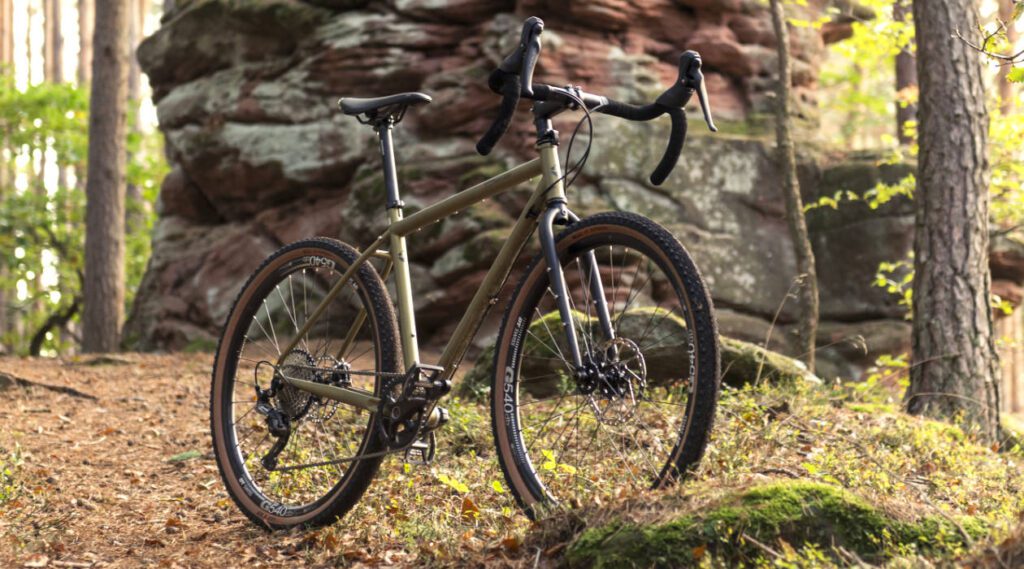


Gravel bikes are designed to tackle a variety of terrains, combining features from both road and mountain bikes.
Read More : ” How Long Should Mountain Bike Tires Last? “
They are built to handle gravel roads, dirt trails, and even pavement, making them versatile options for cyclists who enjoy exploring different surfaces and terrains.
The main purpose of gravel bikes is to provide a comfortable and efficient riding experience on mixed surfaces. They are ideal for cyclists who want to venture beyond traditional road routes and explore scenic off-road trails and backcountry paths.
Gravel bikes are also popular among adventure cyclists and bikepackers who seek to cover long distances over diverse terrains.
To suit their purpose, gravel bikes come with specific design features. They have wider tires with a knobby or semi-knobby tread pattern to provide better traction on gravel and dirt surfaces.
The frame geometry is often more relaxed compared to road bikes, offering a more comfortable and stable riding position.
Additionally, many gravel bikes are equipped with disc brakes for reliable stopping power in various conditions.
Overall, gravel bikes are a versatile choice for cyclists who want to enjoy the freedom of riding on a mix of terrains, from smooth asphalt to challenging gravel paths, providing them with the perfect balance between performance and adventure.
Frame Geometry
Frame Geometry for Mountain Bikes:



Frame geometry is a critical aspect of mountain bikes that influences their handling, stability, and performance on various terrains.
Read More : ” Is Front Suspension Necessary On A Hybrid Bike? “
The design of a mountain bike’s frame is carefully engineered to meet the demands of off-road riding, providing the rider with control, comfort, and responsiveness.
Key elements of frame geometry for mountain bikes include:
Head Tube Angle:
The head tube angle determines the steering responsiveness of the bike. A steeper angle (around 68-71 degrees) offers quicker handling, ideal for technical trails and agility, while a slacker angle (around 65-67 degrees) provides more stability during descents and at high speeds.
Seat Tube Angle:
The seat tube angle affects the rider’s seated position. A steeper angle (around 74-76 degrees) places the rider more forward, optimizing power transfer and climbing efficiency. A slacker angle (around 72-74 degrees) enhances stability and comfort on descents.
Wheelbase:
The distance between the front and rear wheel axles determines the bike’s stability. A longer wheelbase offers more stability and control on rough terrain, while a shorter wheelbase enhances maneuverability and agility on technical trails.
Chainstay Length:
The length of the chainstay affects the bike’s handling. Shorter chainstays result in a more responsive bike, ideal for tight corners and technical sections. Longer chainstays offer better stability and climbing traction.
Bottom Bracket Height:
The height of the bottom bracket affects the bike’s center of gravity. A lower bottom bracket provides better stability and cornering, but it can be prone to striking obstacles. A higher bottom bracket offers better clearance but might sacrifice some stability.
Proper frame geometry is crucial to a mountain bike’s overall performance, ensuring that it can handle the challenges of off-road riding and deliver an enjoyable experience for the rider.
Frame Geometry for Gravel Bikes:



Gravel bikes have a unique frame geometry that combines elements from both road bikes and mountain bikes, making them versatile for a variety of terrains, including gravel roads, dirt paths, and even pavement.
The design of a gravel bike’s frame is optimized to offer comfort, stability, and efficiency, enabling riders to tackle long distances and rough surfaces.
Key elements of frame geometry for gravel bikes include:
Head Tube Angle:
Gravel bikes typically have a more relaxed head tube angle (around 70-72 degrees) compared to road bikes. This provides more stability and control, especially when navigating loose or uneven surfaces.
Seat Tube Angle:
The seat tube angle on gravel bikes can vary, but it is often slightly more upright than road bikes. This helps to enhance comfort during long rides and provides a balanced position for both climbing and descending.
Wheelbase:
Gravel bikes tend to have a longer wheelbase than road bikes, offering better stability on rough terrain. A longer wheelbase also accommodates wider tires, which are commonly used on gravel bikes for improved traction and comfort.
Bottom Bracket Height:
Gravel bikes usually have a slightly lower bottom bracket height than road bikes. This provides better stability and confidence on off-road surfaces without compromising pedal clearance.
Tire Clearance:
One of the defining features of gravel bikes is their ability to accommodate wider tires. Frame geometry ensures sufficient clearance for tires with widths ranging from 35mm to over 50mm, depending on the model.
Overall, gravel bike frame geometry strikes a balance between road and mountain bikes, making them well-suited for all-day adventures and exploring mixed terrains with comfort, versatility, and performance.
Suspension
Suspension for Mountain Bikes:
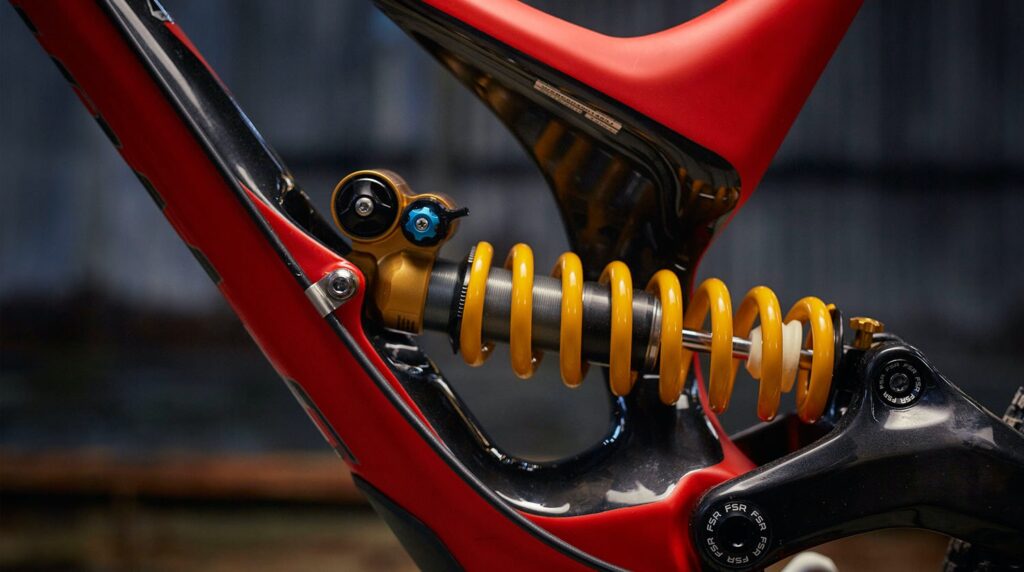


Mountain bikes are equipped with suspension systems to enhance rider comfort, control, and traction when navigating rough and challenging terrains.
The suspension absorbs impacts and vibrations from uneven surfaces, providing a smoother and more controlled ride.
There are two main types of suspension found on mountain bikes:
Front Suspension (Hardtail):
Hardtail mountain bikes have suspension forks in the front, allowing the front wheel to move up and down. This helps to absorb shocks from rocks, roots, and bumps, improving steering and providing better control on trails.
Full Suspension (Dual Suspension):
Full suspension mountain bikes have both front suspension forks and a rear shock absorber. The rear suspension allows the rear wheel to move independently from the frame, further enhancing shock absorption and improving traction.
Full suspension bikes are ideal for aggressive trail riding, downhill descents, and technical terrain.
Suspension components are essential for maintaining the connection between the wheels and the ground, ensuring the tires maintain contact for better grip and control.
They also reduce fatigue, allowing riders to stay comfortable and ride longer, particularly on challenging trails.
However, suspension adds weight and complexity to the bike, which may affect climbing performance and efficiency on smoother surfaces.
Choosing the right type of suspension depends on the rider’s preferences, the type of trails they ride, and the intended use of the mountain bike.
Suspension For Gravel Bikes:
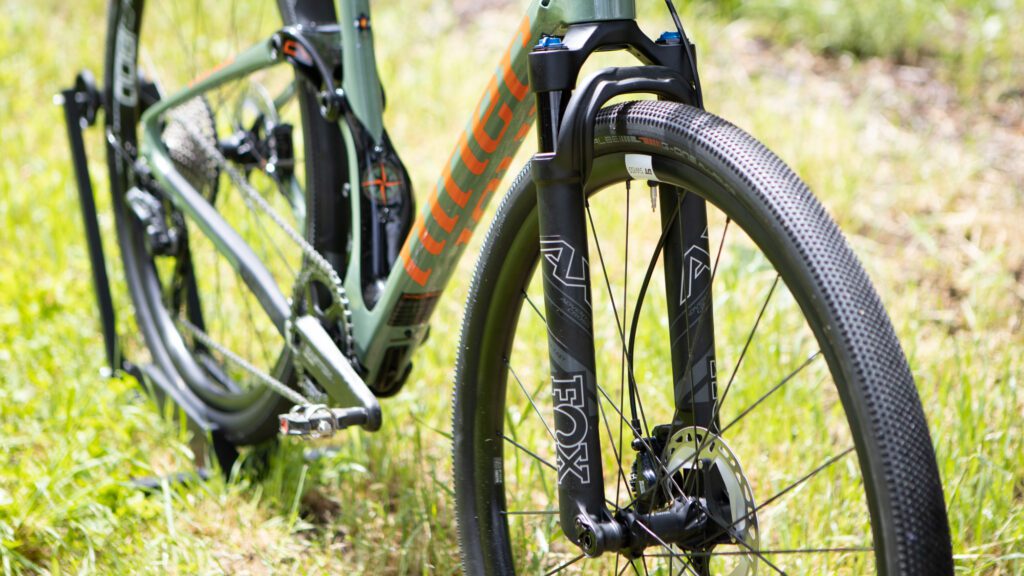


Suspension for gravel bikes refers to the inclusion of a shock-absorbing system designed to enhance comfort and control while riding on rough and uneven terrain.
Gravel bikes are versatile bicycles meant to handle a mix of on-road and off-road surfaces, making suspension an important consideration for riders seeking a smoother and more enjoyable experience.
There are two main types of suspension commonly found on gravel bikes: front suspension forks and frame compliance.
Front Suspension Forks:
Some gravel bikes come equipped with front suspension forks, similar to those found on mountain bikes.
These forks have a suspension mechanism that allows the front wheel to move up and down, absorbing impacts from rocks, roots, and other obstacles encountered on gravel or off-road trails.
The suspension travel on gravel suspension forks is typically more limited than that of full-fledged mountain bike forks, as the focus is on maintaining efficiency and minimizing weight.
Frame Compliance:
While many gravel bikes do not have traditional suspension forks, they may incorporate design features that enhance frame compliance.
Frame compliance refers to the intentional flex in the frame or specific components (such as seat posts) that absorb vibrations and impacts from the road or trail.
Manufacturers achieve this compliance by using materials like carbon fiber or designing frame shapes that allow for controlled flex.
Tire Clearance
Tire Clearance for Mountain Bikes:
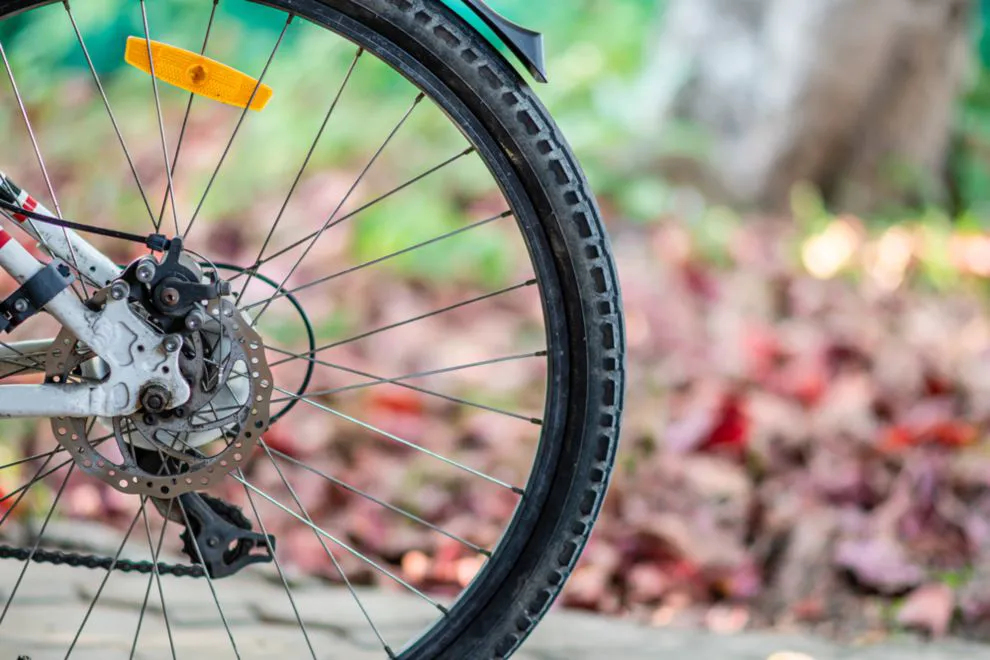


Tire clearance refers to the amount of space available in a mountain bike frame to accommodate the size and width of the tires. It is an essential aspect of mountain bikes, as tire clearance directly affects the type and size of tires that can be used on the bike.
Mountain bikes typically have larger tire clearances compared to other types of bikes, such as road bikes or hybrids.
This is because mountain bikes are designed to handle a wide range of terrains, including rough trails, rocks, roots, and mud. The larger tires provide better traction and stability on challenging surfaces.
Having ample tire clearance on a mountain bike allows riders to use wider tires, which offer more grip and better flotation. Wider tires can run at lower pressures, providing improved traction on loose or slippery surfaces.
They also offer more cushioning, making the ride more comfortable, especially when riding over rough terrain.
Mountain bikes designed for specific disciplines, such as cross-country, trail, or downhill, may have different tire clearances to accommodate different tire sizes and treads.
Riders should consider the type of terrain they plan to ride and the conditions they expect to encounter to choose a mountain bike with the appropriate tire clearance for their needs.
Tire Clearance for Gravel Bikes:



Tire clearance is an important consideration for gravel bikes as well, but it differs from that of mountain bikes.
Gravel bikes are designed to handle a mix of road and off-road terrains, including gravel roads, dirt paths, and rough surfaces. As a result, they have their own specific tire clearance requirements.
Gravel bikes typically have larger tire clearances compared to road bikes but smaller than mountain bikes.
The extra tire clearance allows gravel bikes to accommodate wider tires, providing riders with more stability and comfort on rough and uneven surfaces.
Wider tires also offer better traction and control, which is essential for navigating challenging gravel roads and trails.
The tire clearance on a gravel bike allows riders to use tires with tread patterns optimized for gravel riding, striking a balance between rolling efficiency on roads and grip on loose surfaces.
The ability to fit wider tires also provides the option to run lower tire pressures, further enhancing comfort and traction.
Gravel bikes may have different tire clearances based on the intended use and rider preferences. Some gravel bikes can fit tires with widths up to 40mm or more, allowing for versatility and adaptability across different riding conditions.
Ultimately, the tire clearance on a gravel bike plays a crucial role in the bike’s performance and versatility, enabling riders to confidently explore a wide range of terrains with enhanced control and comfort.
Riding Styles and Adventures
Here’s a table comparing the riding styles and adventures of both mountain bikes and gravel bikes:
| Riding Styles and Adventures | Mountain Bikes | Gravel Bikes |
| Riding Styles | ● Off-road trails and technical terrain | ● Mixed surfaces, including gravel and dirt roads |
| ● Downhill descents and steep climbs | ● Long-distance touring and bikepacking adventures | |
| ● Trail riding and aggressive maneuvers | ● Exploring backcountry routes and scenic landscapes | |
| ● Frequent jumps and obstacles | ● Leisurely rides on various terrains | |
| ● Challenging and adrenaline-pumping experiences | ● Relaxed and versatile riding for all skill levels | |
| Adventures | ● Mountainous regions and rugged landscapes | ● Gravel roads and country lanes |
| ● Forests, canyons, and natural trails | ● Scenic routes through rural areas | |
| ● Enduro races and downhill competitions | ● Gravel events and multi-day bike tours | |
| ● Mountain bike parks and challenging singletracks | ● Bikepacking trips and exploring off-the-beaten-path | |
| ● Adventure-filled excursions in remote areas | ● Multi-terrain exploration and discovery |
In summary, mountain bikes are designed for adventurous riding on technical trails and challenging terrains, providing an adrenaline-pumping experience.
On the other hand, gravel bikes are built for versatile exploration, allowing riders to enjoy long-distance touring and scenic rides on various surfaces, from gravel roads to country lanes.
Versatility and Performance
Certainly, here’s a table explaining the Versatility and Performance of both mountain bikes and gravel bikes:
| Versatility and Performance | Mountain Bikes | Gravel Bikes |
| Versatility | ● Suitable for off-road and technical terrain | ● Versatile for mixed surfaces and various terrains |
| ● Can handle rough and challenging conditions | ● Capable of riding on gravel, dirt, and paved roads | |
| ● Ideal for downhill descents and steep climbs | ● Performs well on long-distance touring and bikepacking | |
| ● Suitable for trail riding and aggressive maneuvers | ● Comfortable for leisurely rides and commuting | |
| Performance | ● Excellent suspension system for shock absorption | ● Lightweight frame for efficient pedaling |
| ● Wide and knobby tires for traction and stability | ● Treaded tires for grip on gravel surfaces | |
| ● Powerful disc brakes for reliable stopping | ● Equipped with drop bars for multiple hand positions | |
| ● Durable and sturdy build for intense riding | ● Efficient and responsive on various terrains | |
| ● Offers high-speed control and agility | ● Comfortable geometry for long-distance riding |
In summary, mountain bikes excel in providing performance and versatility for off-road adventures, with excellent suspension systems and wide tires for tackling challenging terrains.
On the other hand, gravel bikes are designed to offer a high level of performance on mixed surfaces, featuring lightweight frames, efficient pedaling, and drop bars for long-distance touring and exploration.
A Detailed Overall Comparison Table Between Both Bikes
Difference Between Mountain Bike And Gravel Bike
| Comparison Aspect | Mountain Bikes | Gravel Bikes |
| Terrain | Designed for off-road trails and rough terrains | Suitable for mixed surfaces, including gravel, dirt, and pavement |
| Riding Style | Best for trail riding, downhill, and technical terrain | Ideal for adventure cycling, bikepacking, and long-distance touring |
| Frame Geometry | Aggressive and upright for stability and control | More relaxed and endurance-oriented for comfort |
| Suspension | Front and rear suspension for shock absorption | Rigid frame with limited or no suspension |
| Tire Type | Wide and knobby tires for traction and grip | Treaded tires for a balance of speed and stability |
| Brakes | Disc brakes for powerful and consistent stopping | Disc brakes or rim brakes for reliable braking |
| Handlebars | Flat or riser handlebars for better control and grip | Drop bars for multiple hand positions and comfort |
| Gearing | Wide range of gears for climbing and descending | Versatile gearing for varied terrains and endurance |
| Weight | Heavier due to suspension and sturdy components | Lighter weight for efficient pedaling and maneuverability |
| Purpose | Thrilling mountain adventures and technical trails | Versatile riding, including commuting and bikepacking |
| Performance | Excellent off-road capabilities and downhill control | Efficient and comfortable for long-distance exploration |
| Comfort | May be less comfortable on smoother surfaces | Comfortable geometry and less jarring on rough terrain |
In summary, mountain bikes are tailored for off-road excursions and technical trails, providing superb shock absorption and traction.
In contrast, gravel bikes are versatile for mixed terrains, featuring a more comfortable geometry and efficient pedaling for long-distance adventures.
Each type of bike is specialized for distinct riding styles and terrain, allowing cyclists to choose the best option based on their preferences and planned activities.
Conclusion
In conclusion, mountain bikes and gravel bikes are two distinct types of bicycles, each designed to excel in specific riding conditions.
The key differences lie in their terrain suitability, frame geometry, suspension, tire type, and intended riding styles and adventures.
Mountain bikes are ideal for challenging off-road trails and technical terrains, featuring full suspension for shock absorption and knobby tires for superior traction
On the other hand, gravel bikes are built for versatility, performing well on mixed surfaces like gravel, dirt, and pavement.
They boast a more relaxed frame geometry, often with drop handlebars, providing multiple hand positions for long-distance comfort.
While both bikes have their strengths, choosing the right one depends on your preferred riding style and the type of adventures you plan to embark on.
Whether you’re seeking thrilling mountain escapades or looking to explore diverse terrains on extended journeys, understanding the differences between mountain bikes and gravel bikes allows you to make an informed decision that aligns with your cycling goals.
FAQ’s
Can you use a gravel bike as a mountain bike?
While a gravel bike can handle some light off-road trails, it’s not suitable for challenging mountain biking due to its limited suspension and tire clearance.
Is gravel bike faster than mountain bike?
In general, on smooth and flat surfaces, a gravel bike may be faster due to its lighter weight and smoother tires, but on rough terrains, a mountain bike excels.
What is the main difference between gravel bike and road bike?
Gravel bikes are versatile for various terrains with wider tires, disc brakes, and more relaxed geometry. Road bikes are optimized for speed on smooth roads with narrower tires and a more aggressive riding position.
Are gravel bikes good for long distance?
Yes, gravel bikes are suitable for long-distance rides due to their comfortable geometry, ability to handle rough terrain, and capacity for carrying gear.
Are gravel bikes good for hills?
Gravel bikes can handle hills well, thanks to their lower gears and versatile tires, making them capable of conquering various terrains, including steep inclines.



Welcome to Bikegenics, where passion meets performance! We are a leading online destination for all things related to mountain biking, dedicated to providing you with top-notch gear, expert advice, and an immersive community to fuel your two-wheeled adventures. With a commitment to excellence and a deep love for the sport, we strive to elevate your biking experience to new heights.
